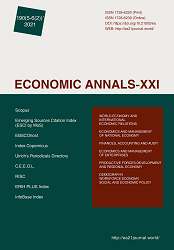Macroeconomic indicators and student mobility: A case study of the African countries most actively involved in FAO student mobility
Macroeconomic indicators and student mobility: A case study of the African countries most actively involved in FAO student mobility
Author(s): Henrietta Janik, Zsuzsanna Tóth-NaárSubject(s): Agriculture, International relations/trade, Higher Education
Published by: Institute of Society Transformation
Keywords: Agriculture; Internationalisation; FAO Student Mobility; Macroeconomic Indicators; Africa;
Summary/Abstract: The internationalization of higher education is one of the most current topics related to education today. The number of foreign students in major higher education institutions is increasing, and international collaborations in the field of education and research are becoming more frequent. Even though the topic is so tangible in proximity, still little is known about the process of internationalization of higher education and the factors that support and hinder the phenomenon. The theoretical significance of this study is the regression analysis of the revealed literature and statistical data, while the practical significance is the possible comparative study of the research carried out in the international context depending on the number of FAO scholarship students coming to Hungary from African countries. The study covers 12 years of mobilities from 2008 to 2020. The study presents the distribution of FAO scholarship students arriving in Hungary from African countries and analyses a correlation between macroeconomic indicators, student mobility and the likelihood of international migration regarding sending African countries, using linear regression analysis and SPSS as a statistical method. For this analysis the data from the ILOSTAT Database has been used. The result of the study is that there are correlations between indicators in only a few cases, such as the HDI and MPI index of the African countries and GDP per capita. The GDP per capita has really strong positive correlation with the HDI index. There is a medium correlation between agriculture, forestry, and fishing, value added (% of GDP) and the employment in agriculture in the examined African countries. Also, our results suggest there is a moderately strong negative correlation between MPI index and GDP per capita.
Journal: Економічний часопис - ХХІ
- Issue Year: 190/2021
- Issue No: 5-6(2)
- Page Range: 75-85
- Page Count: 11
- Language: English

